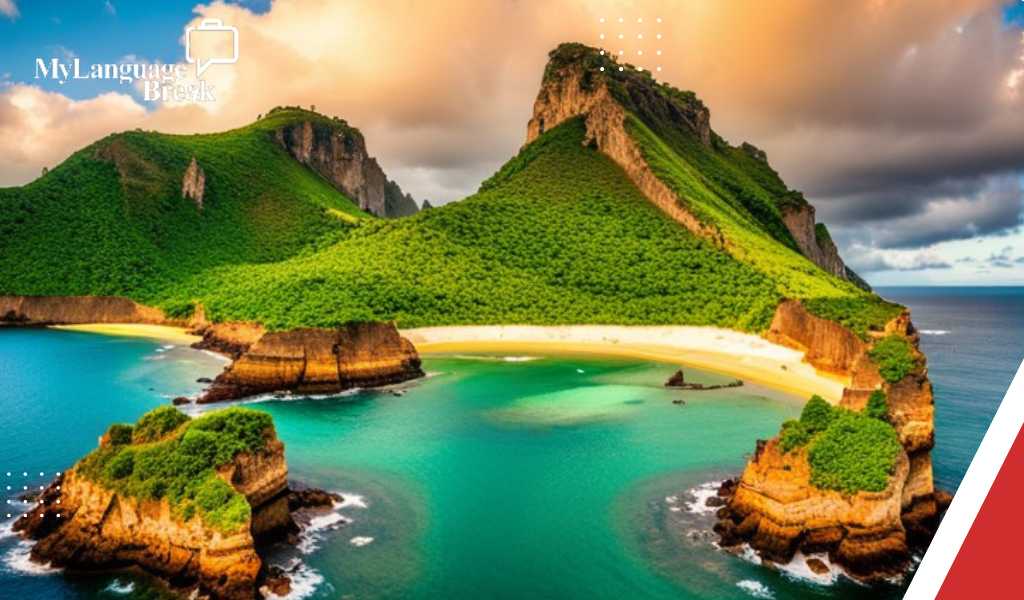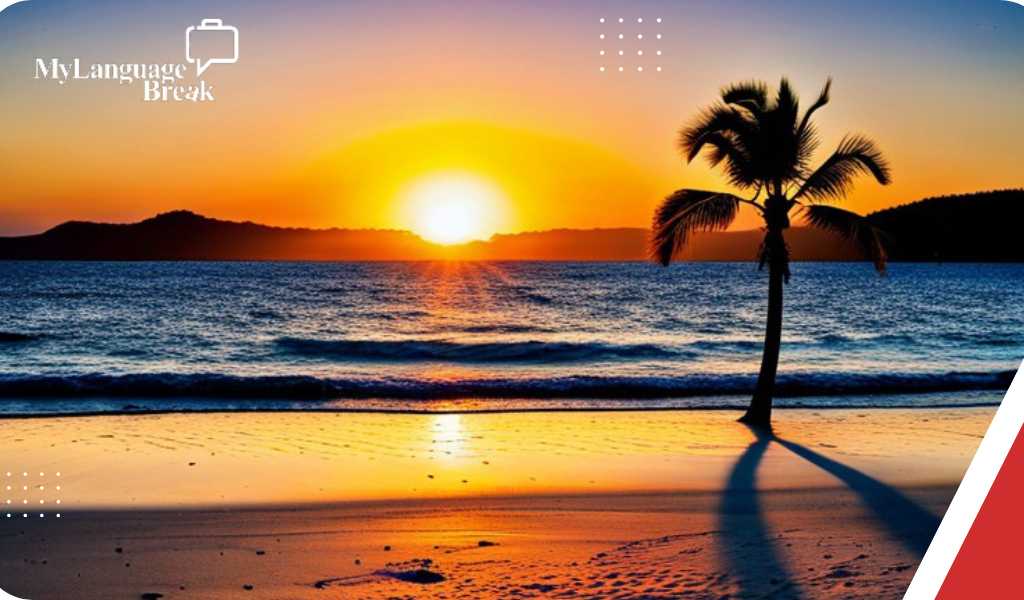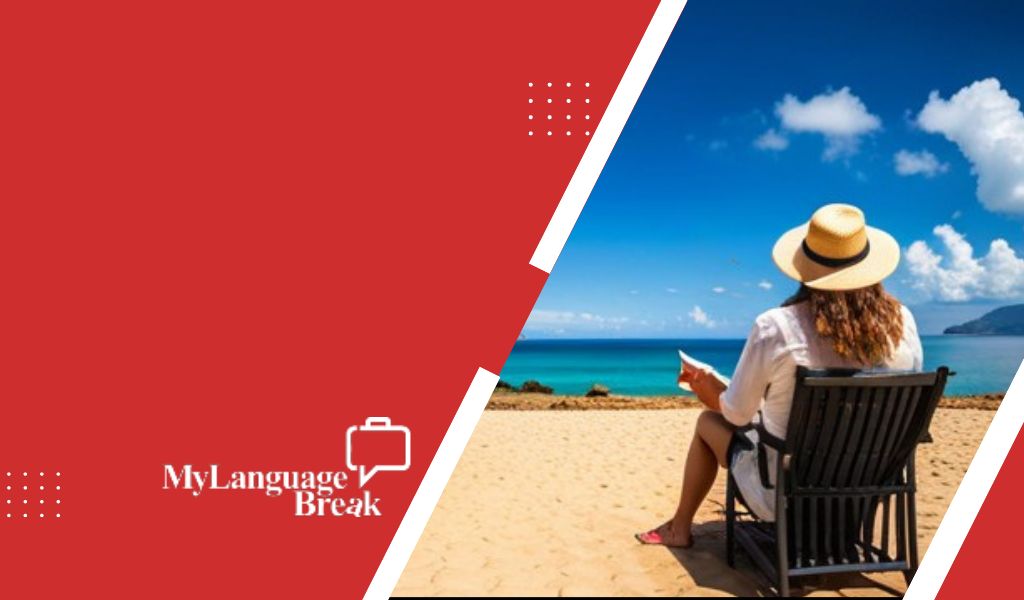Spanish is spoken in the Canary Islands, a group of islands that are situated off the coast of Morocco. The Spanish language has been in contact with many other languages over its long history. This means that it’s not unusual for Spanish to have words from Arabic or Berber, which are both languages originating in North Africa.
The Canary Islands are made of Tenerife, Gran Canaria, Fuerteventura, Lanzarote, La Gomera and La Palma. There are also a few other smaller islands.
Those of you who speak flawless Castilian Spanish may be in for a surprise.
The Canary Islands have a lot more than just the sea, sand, and cheap sangria. There are many people living in the islands who learn about how different invaders and influences have come to live there.
It’s only 2-3 hours away from the UK by plane, and with cheap airfare to Europe, it is one of the cheaper destinations.

Learn The Spanish Of The Canary Islands
Many would be surprised to find out that Spanish is not the only language spoken in this fascinatingly beautiful island. Indeed, Canary Island’s residents speak their own dialect, which is very different from other forms of Spanish.
In particular, they have a tendency to omit or replace some sounds that are considered critical to Spanish. Some examples include the absence of the ‘s’ at the end of a word as well as some conjugations.
The inhabitants of this region refer to their language as “dialecto”, which means something more like a regionalized version of Spanish.
As a result, those who learn to speak canary island Spanish will come away with a refined and fascinatingly unique version of the language – something that is sure to impress many people! It’s also a great way to experience another culture first-hand.
In more populated areas, there are more places where people speak English. That is why you should avoid those areas. The best thing to do is go to a place where people mostly speak a different language. Prices will be lower and you’ll have a better chance of finding what you want.
What makes Canarian Spanish different?
This dialect is like the language in Latin America. People on the mainland think it’s sexy. You need to talk like this if you want people to like you.
Canary Spanish doesn’t use “vosotros” for the plural form of ‘you’. When speaking to a Canary Islander, you should use “ustedes”. The ‘th’ sound in Castilian Spanish is replaced with an ‘s’.
The word “de” is used in Castilian Spanish to express possession. On the Canary Islands, they typically drop this, resulting in a shorter name: ‘ Casa Marta’’
In the Canary Islands, Spanish-speaking people construct shorter phrases by combining words. This will be simple with practice.
You will also find the s sound instead of th in c/z and the h sound for s. These are typical in Andalusia and other parts of Latin America.
There are other characteristics on canary island Spanish considered to be charming, such as the way they say “tengo”. It’s pronounced roughly like “teño”.
Fisco is a small amount. Mojo is a sauce from the Canaries that usually goes on top of potatoes.

Learn the most used Canarian Spanish words
In the Canary Islands, there is no language everyone speaks. But some people speak one of the languages, like Portuguese. We also have words like “aguinaldo” and “Aprender”.
Here are some helpful words and phrases to know if you’re learning Canarian Spanish. We do have words that people use every day. Here are some of those words to learn right now:
- Guagua: A guagua is a bus in the Canary Islands. It is like a city bus.
- Buche: A buche is a shot or sip in Spanish. You can say “I am going to take a buche” if you want to drink something.
- Guachinche or bochinche: A guachinche is an establishment where you can eat homemade food. The food is usually made by a family and the place is often in a garage or large building.
- Roscas or cotufas: The roscas in Gran Canaria are popcorn. In the province of Santa Cruz de Tenerife, they are called cotufas.
- Cholas: The flip flops are called cholas. This word is used in all of the Canary Islands.
- Playeras or tenis: In Gran Canaria we call playeras, and in Tenerife they call them tenis.
- Cambado: A cambado is a crooked thing. That palm is a little crooked right now.
- Enralarse: Energetic. Happy. Enjoying life.
- Embostarse and jartarse: Embostarse and jartarse mean the same thing. To embostarse and jartarse means to finish your food, until you are full.
- Calufa: In Canarian Spanish, “calufa” means hot. For example, the word “¡Qué calufa!” mean “How hot”
- Jaya or jilorio: I am hungry!
- Millo: In the Canary Islands, we say millo to the corn instead of maí.
- Bosta: “Bosta” is the word for someone who is very fat. It can also mean a large poop.
- Ñoños: The Canary Islands are in the Pacific Ocean. There are many volcanoes there. The islands are also known as ñoños, which are toes.
- Fos: This word is used by canaries to tell other animals that something smells bad.
- Machango: The word machango is often used as a bad word to describe someone who does or says nonsense. It can also be used that way.
- Ños or chos: No or cho can be a word for many words. Phew! is one of them. Wow! is another word that it can mean too.
- Maúro or mago: A person from Tenerife or Gran Canaria is someone who lives in the countryside. Do not act like that.
- Arretranco: An arretranco is an old, broken thing. You have the house full of arretr.
- Zarcillos: Zarcillos are earrings.
- Chacho or chacha: We can say this word 10 times a day. It is the same as “dude” or “damn”.
That’s all for this language lesson. I hope you enjoyed it! Now you can go out and learn some Canarian Spanish!

